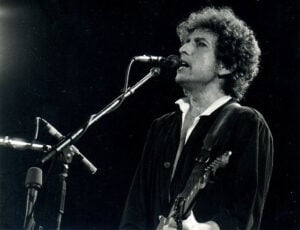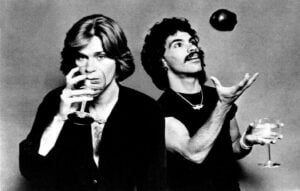5 Essential Dire Straits Songs That Didn’t Make It Onto Their No. 1 Album Brothers in Arms

Photo by Victor Schiferli, CC BY-SA 2.0, via Wikimedia Commons.
Beyond the Fame of Brothers in Arms
In the 1980s, Dire Straits stood shoulder to shoulder with U2 and The Police as one of Britain’s most successful rock bands. Their 1985 album Brothers in Arms became a worldwide phenomenon, achieving Platinum or Diamond status in ten countries and topping charts across the globe. But while that record cemented their place in rock history, it also cast a long shadow over the rest of their catalog.
Six years passed before the band released a follow-up, On Every Street in 1991, which still hit No. 1 in eight countries—an impressive feat given how music tastes had shifted toward grunge. Yet before Brothers in Arms took over the airwaves, Dire Straits had already built an impressive collection of songs that showcased Mark Knopfler’s storytelling, technical skill, and musical depth.
“Tunnel of Love” from Making Movies (1980)
Opening with the classic “Carousel Waltz” by Rodgers and Hammerstein, Making Movies kicked off with “Tunnel of Love,” one of the band’s most emotional and cinematic works. It revealed Knopfler’s ability to blend rock energy with poetic storytelling. The song features one of his finest guitar solos and lyrics that rivaled the emotional honesty of Bruce Springsteen—who, fittingly, would release a song of the same name years later.
This track marked a turning point for Dire Straits, setting the stage for the sweeping, detailed musical narratives that would later define their sound. It was both ambitious and deeply human, capturing the nostalgic feeling of young love in motion.
“Twisting by the Pool” from ExtendeDancEPlay (1983)
While Dire Straits are often known for their smooth, laid-back sound, “Twisting by the Pool” proved they could loosen up and have fun. Recorded in just three days in 1982, the track is bright, catchy, and full of playful rhythm. Its rock-and-roll swing made it an instant crowd-pleaser and even earned chart success in the U.S., UK, and New Zealand—where it hit No. 1.
This upbeat number was a refreshing detour from their more serious material, showing that Knopfler’s songwriting could balance humor and heart with ease.
“Telegraph Road” from Love Over Gold (1982)
If one song defines Dire Straits’ cinematic scope, it’s “Telegraph Road.” Spanning over fourteen minutes, it’s an epic exploration of industrial growth and human change. Inspired partly by Growth of the Soil by Norwegian author Knut Hamsun, Knopfler uses vivid imagery and dynamic instrumentation to capture the rise and fall of a town along a stretch of highway.
Despite its length, every second feels essential—its gradual buildup, lyrical storytelling, and extended instrumental passages reveal a band in total command of their craft.
“Once Upon a Time in the West” from Communiqué (1979)
Following the success of their debut album, Dire Straits released Communiqué, which expanded on their signature sound. “Once Upon a Time in the West” blended subtle reggae influences with their bluesy roots, resulting in a calm yet powerful opener. It showcased Knopfler’s growing sophistication as both a guitarist and lyricist.
The song remained a live favorite, appearing in extended form on their 1984 concert album Alchemy. It proved that even without chart-topping hits, the band’s deep cuts carried lasting weight.
“Going Home: Theme of the Local Hero” from Alchemy: Dire Straits Live (1984)
Before Dire Straits disbanded in 1995, Knopfler had already begun exploring projects beyond the group. His first solo endeavor was composing the soundtrack for the 1983 film Local Hero. The instrumental piece “Going Home” became a fan favorite, especially during live performances.
Featured on Alchemy: Dire Straits Live, this track captured the emotional precision of Knopfler’s guitar work and remains one of the most beautiful instrumental closers in rock history.

















